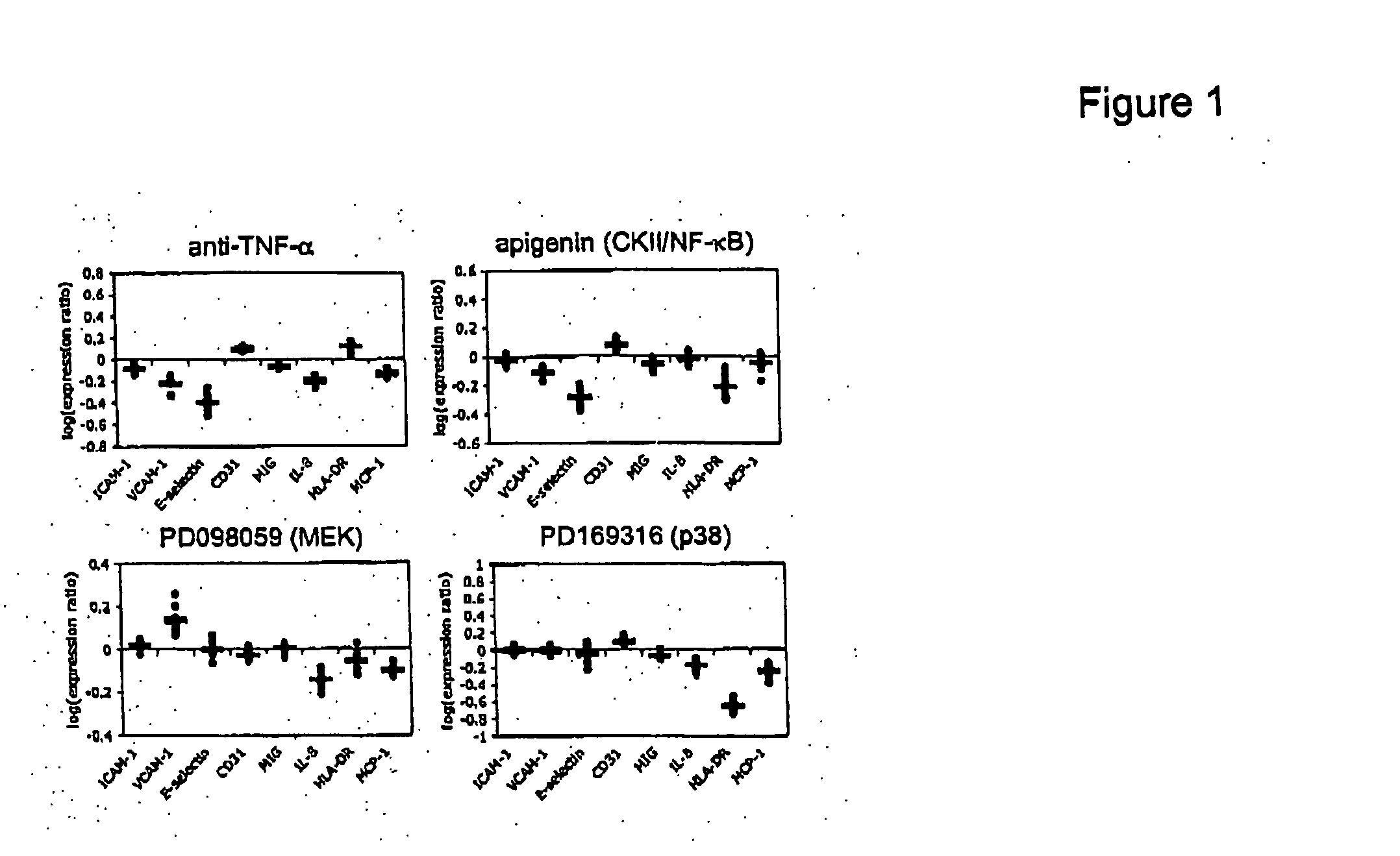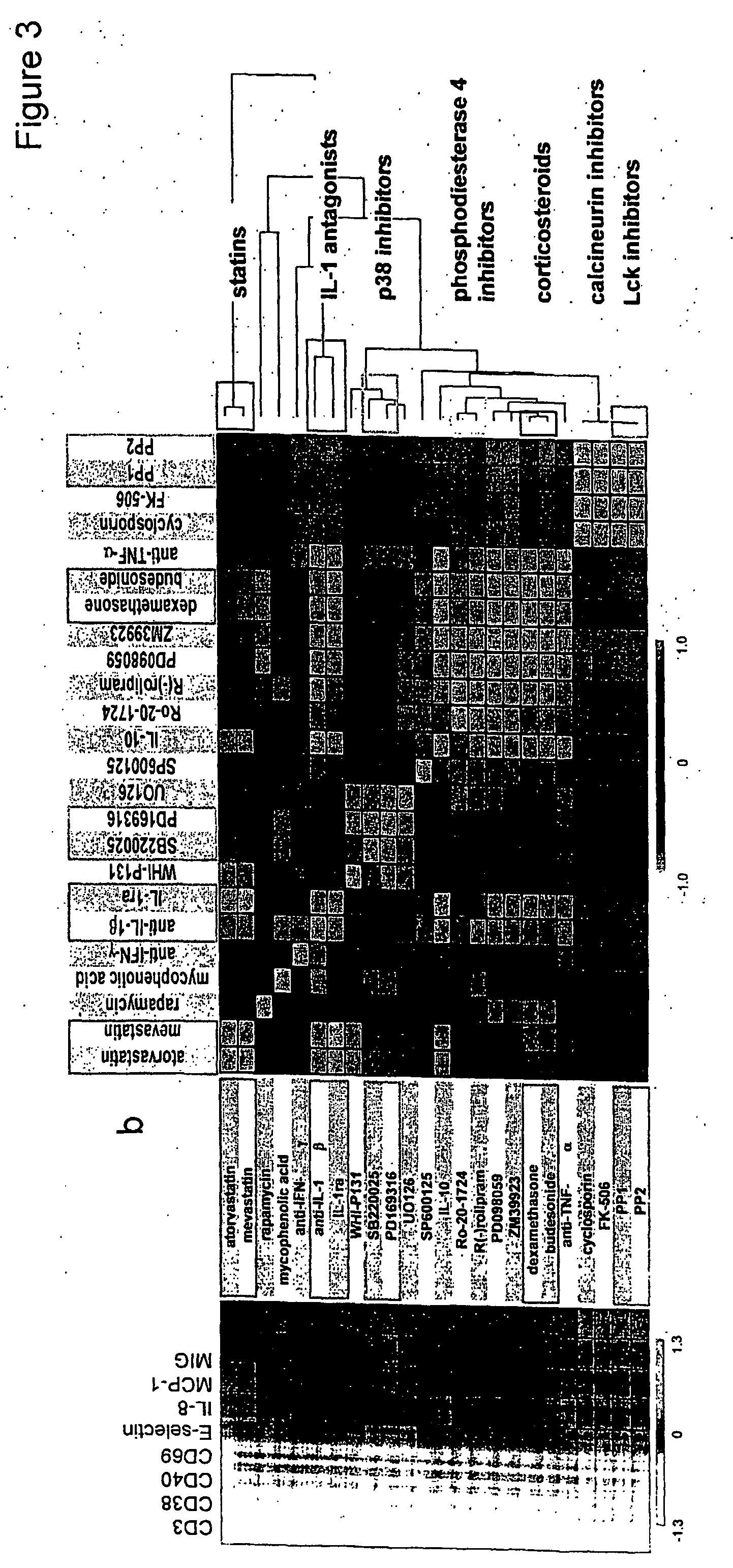Cell-based assays for determining drug action
a cell-based assay and drug action technology, applied in the field of gene and drug function analysis, can solve the problems of unprecedented opportunities for the development of new medicines, less certain application of large-scale measurement approaches to human disease biology, etc., and achieve the effect of improving resolution
- Summary
- Abstract
- Description
- Claims
- Application Information
AI Technical Summary
Benefits of technology
Problems solved by technology
Method used
Image
Examples
example 1
Materials and Methods
[0064] This Example provides information regarding the materials and methods used throughout the remaining examples to illustrate the invention and the advantages provided thereby. Those of skill in the art will recognize that a variety of materials different from those exemplified herein can be used to practice the invention and that variation of the illustrated methods is within the routine skill in view of the teachings herein.
Methods
[0065] Cytokines, antibodies, and reagents. Recombinant human IFN-γ, TNF-α, and IL-1β were from R&D Systems (Minneapolis, Minn.). Murine IgG was from Sigma (St. Louis Mo.). Mouse anti-human tissue factor (mIgG1) was from CALBIOCHEM (San Diego, Calif.). Mouse anti-human ICAM-1 (mIgG1) was from Beckman Coulter (Fullerton, Calif.) and mouse anti-human E-selectin (mIgG1) was from HyCult Biotechnology (Uden, The Netherlands). Unconjugated mouse antibodies against human VCAM-1 (mIgG1), CD31 (mIgG1), HLA-DR (mIgG2a), CD3 (mIgG1), CD...
PUM
| Property | Measurement | Unit |
|---|---|---|
| chemical diversity | aaaaa | aaaaa |
| Heat | aaaaa | aaaaa |
| length | aaaaa | aaaaa |
Abstract
Description
Claims
Application Information
 Login to View More
Login to View More - R&D
- Intellectual Property
- Life Sciences
- Materials
- Tech Scout
- Unparalleled Data Quality
- Higher Quality Content
- 60% Fewer Hallucinations
Browse by: Latest US Patents, China's latest patents, Technical Efficacy Thesaurus, Application Domain, Technology Topic, Popular Technical Reports.
© 2025 PatSnap. All rights reserved.Legal|Privacy policy|Modern Slavery Act Transparency Statement|Sitemap|About US| Contact US: help@patsnap.com



